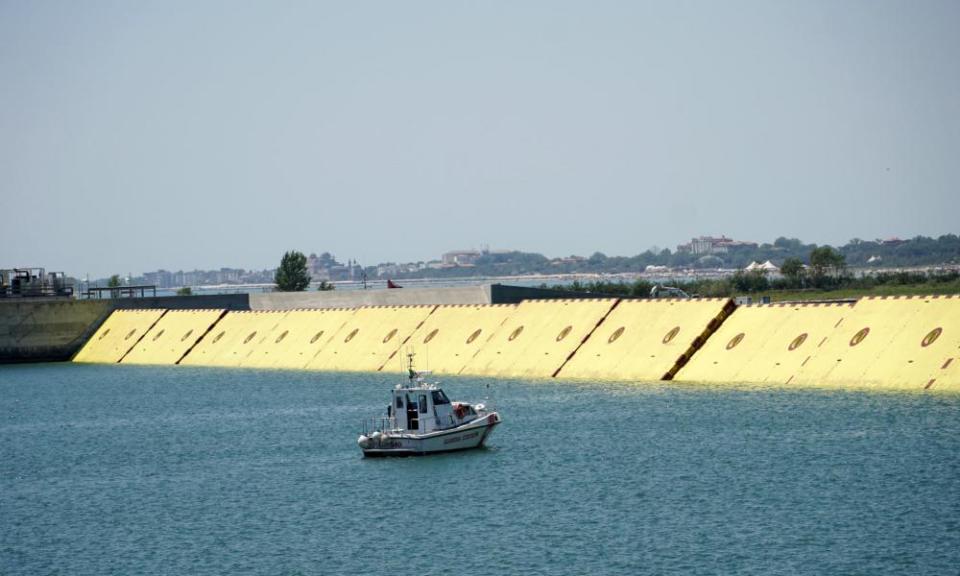Venice's much-delayed flood defence system fully tested for first time
Italy has successfully conducted the first full test of Venice’s flood defence system, a much-delayed project designed in 1984 but still incomplete a decade after it was due to come into service.
Amid much fanfare, the Italian prime minister, Giuseppe Conte, activated the 78 mobile barriers of the Mose dam on Friday. “We’re here for a test, not a parade,” Conte, who was greeted in Venice by activists who have long protested against the project, told reporters. “The government wants to check the progress of the work.”
The Italian government pledged to finish the €6bn (£5.4bn) project, which has been dogged by delays and a corruption scandal since work began in 2003, after Venice experienced its worst flood since 1966 in November last year. The flood killed two people and caused an estimated €1bn worth of damage to monuments, businesses and homes.
The huge yellow floodgates immediately started to work after being activated on Friday, rising simultaneously to separate the Venetian lagoon from the sea. More tests will be carried out over the coming months and the barrier will not be fully functional until the end of 2021.
Conte acknowledged corruption had blighted the project but urged everyone move forward. “It’s right to have doubts and debate,” he said. “But I say to everyone, including those protesting, citizens and intellectuals – let’s focus on finishing Mose. For the final stretch, we assume responsibility and with further financial effort it will be completed, and we hope that it will work.”
Venetians have mixed feelings towards the project, with some considering it to be essential for protecting the city and others saying it has damaged the fragile lagoon. Those against the project argue that work done so far has exacerbated the flooding.

As part of the Mose system, an artificial island was built between Venice Lido and Cavallino-Treporti to separate two rows of barrier gates and to house the main technical buildings for the operation of the gates. Activists argue that the island altered the lagoon and allowed seawater to enter more quickly.
Mose’s detractors organised a “flotilla protest” on Friday but came up against a blockade of police vessels.
“We tried to break the blockade but there was nothing we could do,” Tommasso Cacciari, a spokesperson for the No Mose activist group, told reporters. “But we are satisfied as we achieved our objective – our 20-year dissent has been heard by everyone.”
The same group of protesters regularly demonstrates against cruise ships, with the excavation of canals in order to accommodate the vessels also blamed for making the lagoon more vulnerable to flooding. The government’s plan to reroute cruise ships from the heart of Venice is yet to materialise.
With Mose heading towards completion, residents hope that the flood barrier will be effective against the recurrent acqua alta, or high tide.
The high tide that hit the city late at night amid heavy rain on 12 November last eyar reached 1.87 metres (74 inches) in height, just shy of the record 1.94 metres measured in 1966. The city was flooded several more times over the following days.
“That was a terrible night, I was so afraid,” said Matteo Secchi, who leads the activist group Venessia. “But residents are completely divided over Mose. I was against the project at the beginning – Mose has changed the currents and modified the environmental equilibrium. But now we just need it to work as protecting Venice is essential.”


